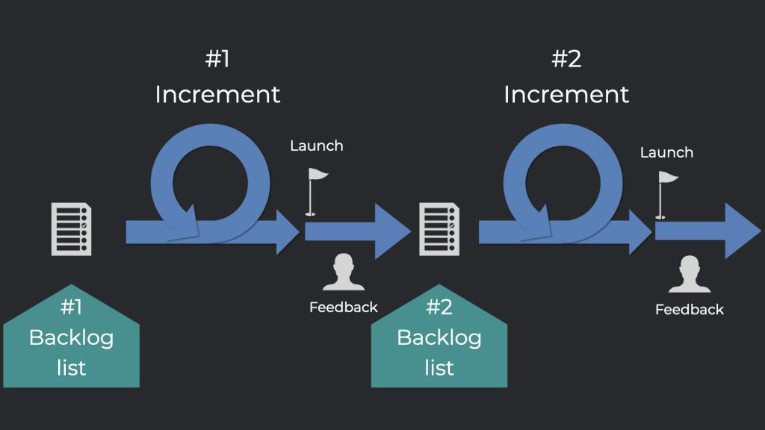Agile methodology is not defined by a set of specific development techniques. On the contrary,
Agile is a group of methodologies that demonstrate a commitment to feedback loops and continuous improvement.
The concept of method and methodology often ends up confusing the understanding of this whole concept. I admit that before writing this post I also had my doubts, but I managed to reach a final understanding. Understand that:
A method is simply a research tool, a component of research – for example, a quantitative method such as interviews. Methodology is a system of methods used in a particular area of study or activity.
The image below explains where the set of agile methodologies and each methodology fits within the model.

What is the Agile set of methodologies?
Agile methodology is an iterative approach to project management and software development that helps teams deliver customer value faster and with less hassle.
Rather than going all-in on a single release, an agile team delivers work in small, actionable increments. Requirements, plans, and deliverables are continually evaluated so the team has a mechanism to respond quickly to potential changes or updates.
The original Agile Manifesto didn’t prescribe any kind of upfront rules, like two-week iterations or an ideal team size. It simply established a set of 4 core values.
- The focus should be on individuals and interactions rather than processes and tools
- Working software is more important than comprehensive documentation
- Customer collaboration is more vital than contract negotiation
- The process should respond to change rather than follow a plan
How you and your team work on these values – whether you use Scrum, or mix elements of Kanban and XP – is entirely up to you and your team.
How does Agile Methodology work?
The agile model adopts iterative development, and each iteration, also known as a sprint, is designed to be small and manageable to be delivered in a short period of time, usually one or two weeks.
Agile methodology is a group of development processes, and its main motive is to remove/avoid activities that may not be necessary for the project and remove anything that is a waste of time and effort.

Benefits of Agile Methodology
Teams often choose to use agile methodology because it allows them to respond quickly to market changes or customer feedback. Planning and implementing in small, frequent increments allows your team to get feedback on each change and integrate it into future plans at minimal cost.
But it’s not just a numbers game – first and foremost, it’s about people. As outlined in the Agile Manifesto, human interactions are more important than following processes to the letter.
Collaborating with customers and teammates is more important than pre-defined rules. And delivering a working solution to a customer’s problem is more important than hyper-detailed documentation.
But if we had to list the benefits of agile methodology, they would be:
- Faster: Speed is one of the biggest benefits of the Agile Model. A faster software development lifecycle also means less time between paying and getting paid.
- Increased customer satisfaction: By following this model, customers don’t wait months or years to get exactly what they didn’t want. Instead, they get iterations of something very close to what they want, much faster.
- Employee appreciation: Employees whose ideas are valued are much more productive than those who are ordered to follow a set of rules.
- Eliminates rework. By involving the client in more than just the requirements and delivery phases, the project stays in tune with the client’s needs at every stage. This means less rework and less “offline” time between the time we do the work and the time the client suggests revisions.
Examples of Agile Methodology
The most popular and common examples are:
- Scrum
- eXtreme Programming (XP)
- Feature Driven Development (FDD)
- Dynamic Systems Development Method (DSDM)
- Adaptive Software Development (ASD)
- Crystal
- Lean Software Development (LSD).
Teams usually choose one or two methods. The most commonly used methodologies are Scrum and XP, which fit together very well.
We will talk about them in a future article.
Conclusion
Agile methodology is an effective process for teams looking for a flexible approach to software development. Agile methodology can be implemented for any venture that requires a plan that values customer collaboration, teamwork, responsive change, and of course, quality results.
How has agile methodology improved your team’s way of working? Don’t forget to share your tips with us!

Deixe um comentário